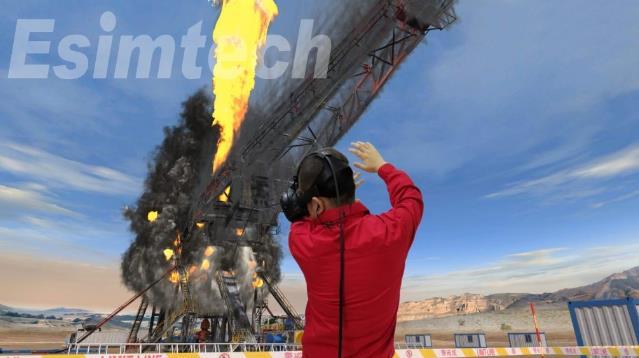The Role of Simulation-Based Emergency Response Drills in Oil and Gas Facilities

Safety is paramount in the oil and gas industry, where operations are often conducted in challenging environments and involve inherent risks. To effectively respond to emergencies such as natural disasters, security threats, and industrial accidents, oil and gas facilities rely on well-coordinated emergency response plans and trained personnel. Simulation-based emergency response drills and exercises have emerged as essential tools for testing response plans, assessing readiness, and enhancing the effectiveness of emergency response teams. In this article, we explore the significance of simulation-based drills in oil and gas facilities, examining how simulations simulate emergency scenarios to test response plans, coordination, and communication protocols.
The Importance of Emergency Response Drills
Oil and gas facilities are susceptible to a wide range of emergencies, including fires, explosions, oil spills, hurricanes, and security breaches. Effective emergency response requires proactive planning, coordination, and training to mitigate risks, protect personnel, and minimize environmental impact. Emergency response drills provide an opportunity for personnel to practice response procedures, identify areas for improvement, and enhance preparedness for real-world emergencies.
Simulating Emergency Scenarios
Simulation-based emergency response drills replicate various emergency scenarios encountered in oil and gas facilities, including:
1. Natural Disasters: Simulations recreate natural disasters such as hurricanes, earthquakes, floods, and tsunamis to assess facility resilience, evacuation procedures, and emergency shelter arrangements. Personnel practice deploying emergency equipment, securing critical infrastructure, and communicating with external agencies to coordinate response efforts.
2. Industrial Accidents: Simulations simulate industrial accidents such as fires, explosions, chemical spills, and equipment failures to evaluate emergency response capabilities, hazard mitigation strategies, and personnel safety protocols. Emergency response teams conduct firefighting, hazmat containment, and casualty evacuation exercises to minimize the impact of accidents on facility operations and surrounding communities.
3. Security Threats: Simulations replicate security threats such as intrusions, sabotage, terrorism, and cyberattacks to assess facility security measures, threat detection capabilities, and crisis management procedures. Security personnel practice threat identification, escalation protocols, and coordination with law enforcement agencies to mitigate security risks and safeguard personnel and assets.
Benefits of Simulation-Based Drills
Simulation-based emergency response drills offer several benefits for oil and gas facilities:
1. Realistic Training: Simulations provide a realistic and immersive training environment for personnel to experience emergency scenarios firsthand, enabling them to practice response procedures and decision-making under pressure.
2. Risk-Free Practice: Simulation drills allow personnel to practice emergency response procedures without the risk of injury or damage to equipment, ensuring that response teams are adequately trained and prepared to handle real-world emergencies.
3. Evaluation and Feedback: Simulations enable instructors to monitor and evaluate personnel performance in real-time, providing feedback and identifying areas for improvement in response plans, coordination, and communication protocols.
4. Team Building and Coordination: Simulation drills promote teamwork, collaboration, and communication among emergency response teams, enhancing coordination and cohesion during emergency response operations.
Conclusion
Simulation-based emergency response drills play a critical role in enhancing safety and preparedness in oil and gas facilities. By simulating emergency scenarios such as natural disasters, security threats, and industrial accidents, simulations enable personnel to practice response procedures, assess readiness, and identify areas for improvement in emergency response plans and protocols. As the oil and gas industry continues to evolve, simulation-based drills will remain a cornerstone of safety management and risk mitigation strategies, ensuring that facilities are well-equipped to respond effectively to emergencies and protect personnel, assets, and the environment.
- Art
- Causes
- Crafts
- Dance
- Drinks
- Film
- Fitness
- Food
- Games
- Gardening
- Health
- Home
- Literature
- Music
- Networking
- Other
- Party
- Religion
- Shopping
- Sports
- Theater
- Wellness


